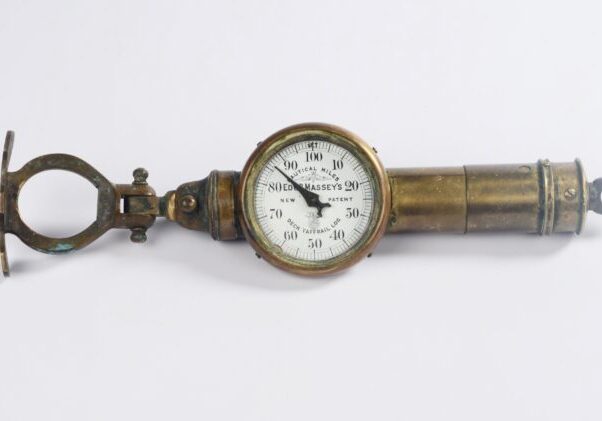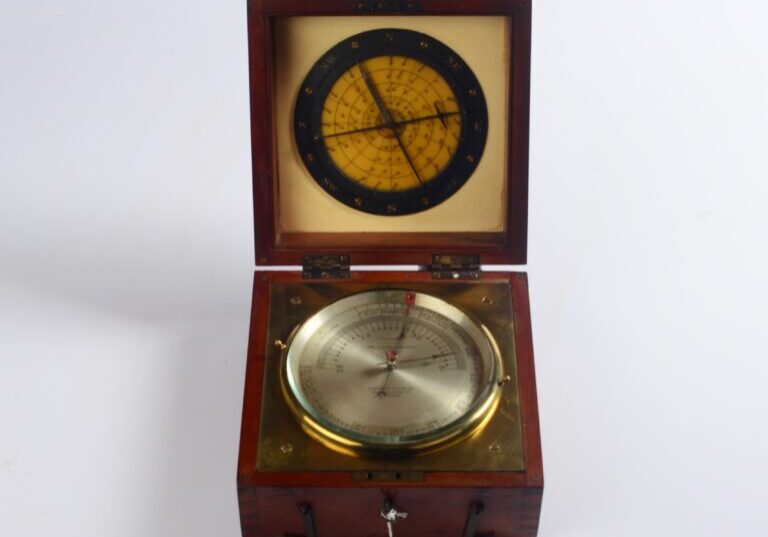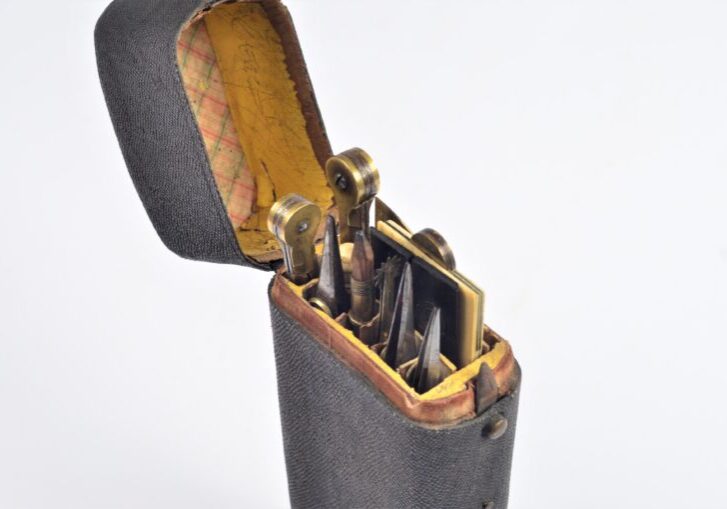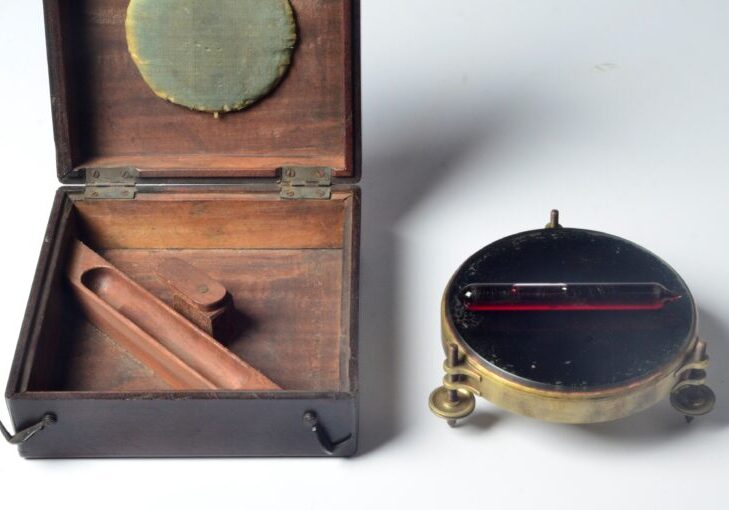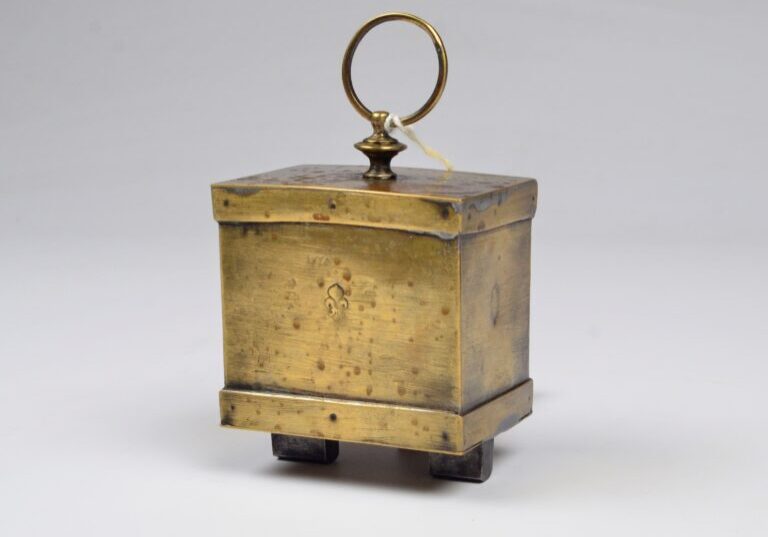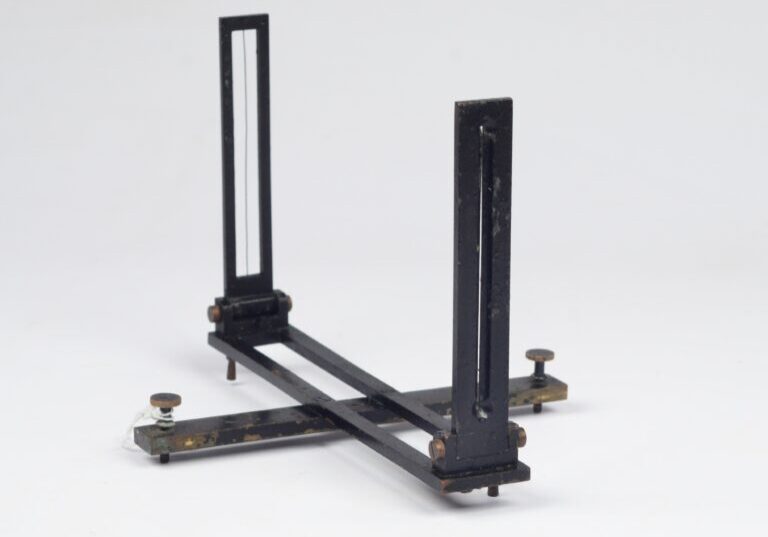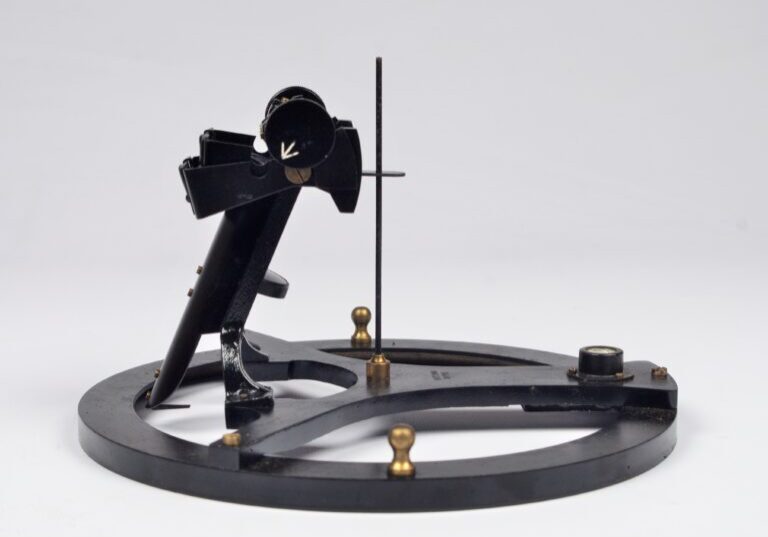Nautical instruments
This part of the collection includes mainly navigational instruments from the early sailing period, the time when ships were made of wood and men were made of steel.
Massey taffrail log number 1842 with universal action bracket and tube shaped register. The dial registers up to 100 miles on a porcelain face. The instrument could be boomed out amidship from the bridge or secured to the taffrail. The production was ceased in 1903.
The universal action bracket, called a Looped Stand Arm and Joint was patented by J.E. Massey in 1876.
The log is also described in Distance Run, page 123 (see cat.nr BK.1-14)
Catalog: NM.6-12
Date: appr. 1890
HWL: 5×9,5×39 cm (2×3.9×15.2 in)
Signed: Edwd Massey’s, nr 1842
Origin: England
Condition: good condition, chip on glass
Early 20th century barocyclonometer or typhoon barometer. On board it is used as a means to determine the the position of the centre of a cyclone at a distance of several hundred miles and permits the calculation of the direction in which the riot of wind is moving. (more…)
A fine and complete two hundred year old shagreen cased set of chart work instruments. All twelve parts are original and present, including two ivory sectors and ebony rule. Also made of brass, two dividers with complete and matching attachments for ink, pencil lines and dotting wheel, (more…)
The artificial horizon was designed for use when the natural horizon is not visible due to weather conditions or darkness. It is used in conjunction with a sextant. The angle of reflection of a celestial body on the mirror is equal to the angle of incidence.
The history of the artificial horizon dates back to the sixteenth century, but development really got underway in the eighteenth century. George Adams designed the mercury trough in 1738 to prevent the swinging of the mercury during the movement of a ship.
This early and particular example consists of a glass plate with a black background mounted in brass tray with three adjusting screw bolts to level the instrument. A wooden ‘brake’ is fitted behind the bolts to prevent unwanted twisting. The horizon is housed in a mahogany box with a hinged lid with hook and eye catchers. The bubble level glass is missing.
Catalog: NM.6-08
Date: ca.1800
D glass: 13.5 cm
HWL case7.5×17.3×17.3 cm
Signed: not signed
Origin: England
Condition: in good and working condition, wear consistent with age and use
Lodestone mounted in a brass frame with carrying ring on top. With two pieces of steel at the bottom to increase the magnetic strength of the lodestone. French lilies on all sides.
Catalogue: NM.6-06
Date: 1600-1650
HWL: 68x71x53 mm, overall height with ring 130 mm
Signed: not signed
Origin: probably French
Condition: in excellent and working condition, wear consistent with age and use
Standard bearing sight with two vanes for use on the gauge compass. The box is assembled with dove tail connections. Provenance Datema, Delfzijl Netherlands.
Catalogue: NM.6-03
Date: ca. 1930-1950
HWL case: 7.5×22.5×26 cm
Signed: not signed
Origin: unknown
Condition: good with signs of wear; case in very good condition
With the azimuth mirror on the compass the direction of a celestial body can be determined, expressed in degrees. Used among other things, to determine the deviation of the compass. The black lackered, brass mirror of unknown maker is never used and comes with a loose pen in a wooden case. The spare pen is missing.
Catalogue: NM.5-48
Date: ca. 1940
HD: 23×13 cm
HWL case: 16.5x26x26 cm
Signed: Patt. 996, No 795
Origin: USA or England
Condition: in perfect condition
Very fine and complete sextant of black painted brass in original case. The inside is simply but effectively furnished. The platina scale, graduated from -5 to 135 degrees, set in a brass arc. Made by Haecke in Neukölln. In the handle is a crown with the letter M and number 1634, the same number as in the case. Case with brass parts.
Catalogue: NM.5-39
Date: 1900-1915
HWL case: 13.5×29.5×27 cm
HW sextant: 25×23.5 cm
Signed: H. Haecke Neukölln 7141
Origin: Germany
Condition: in good and complete condition
‘Entirely British’ Schermuly line throwing apparatus or pistol rocket apparatus in original US Navy case, marked No. 2 with nameplate of the Schermuly factory. On the inner lid instructions for use. In the case four line boxes, each containing 250 yards of line and four rockets with steel lines and a brush for cleanig the barrel. The pistol is marked SPRA with number 18163 and British proofs. Cartridges are missing.
Catalogue: NM.5-35
Date: ca. 1930
HWL case: 16.5x52x67cm
Signed: Schermuly
Origin: England
Condition: in good and working condition, wear consistent with age and use


